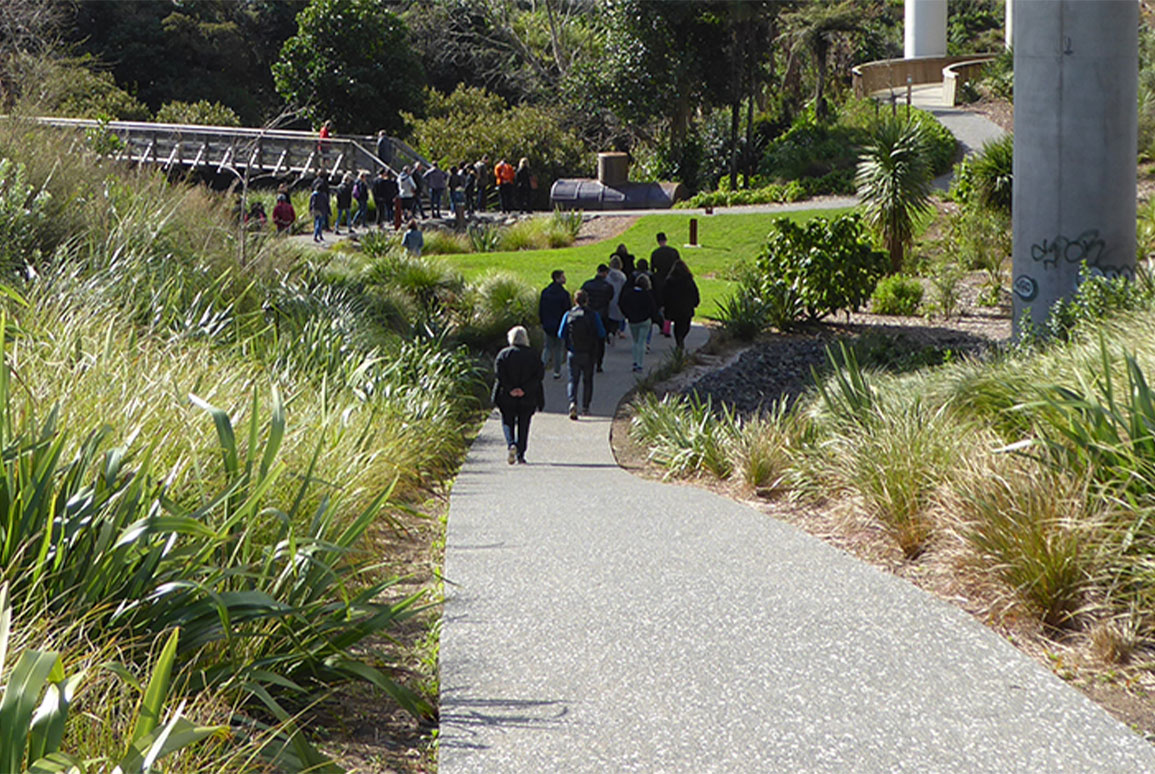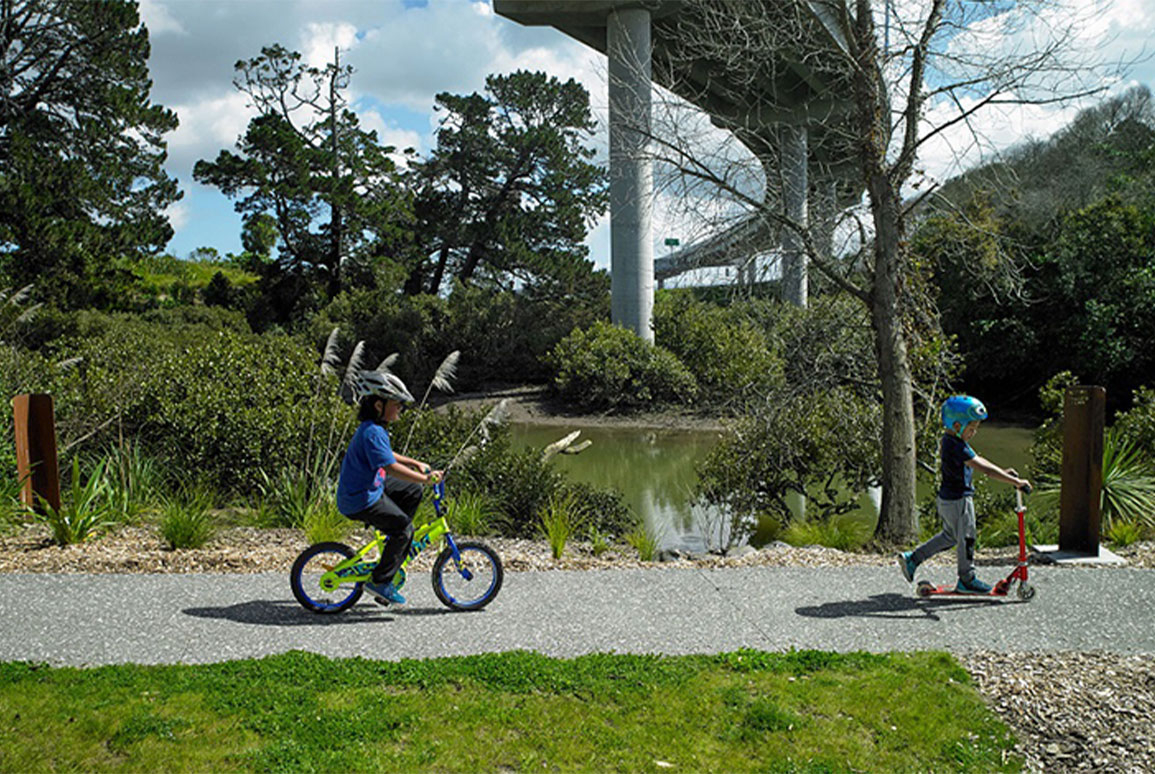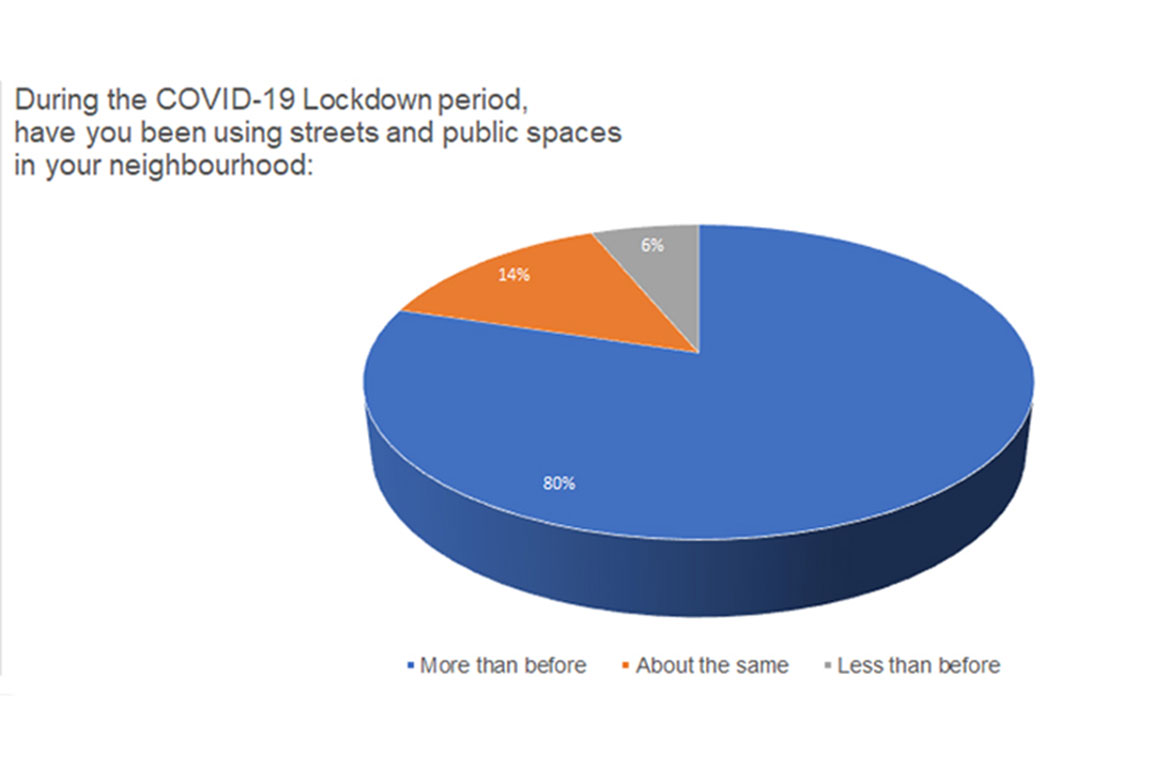Be Bold: Connecting recreation and ecology
30 September 2020
Adding amenities to suburban green spaces can make a difference to the well-being of ourselves and of the planet.

In late April, we posted an informal survey on our social media channels, asking respondents to share their experience of spending more time in their neighbourhood during Level Four.
The survey was driven more by a desire to ‘do something different’ online than by any specific outcome; but the results closely mirror both anecdotal evidence and the findings of more formalised questionnaires.
Forced to spend a few weeks in our own neighbourhoods, and (luckily) with a nearly six-week stretch of sunny weather, most of us got out and explored — either by foot or pedal — and it’s no surprise that footpaths, streets and shared paths/cycleways got the most use.
For over 80 percent of respondents, this enabled them to access most of what they needed, in terms of groceries, healthcare and recreation, but there were some concerns:
“[I’d like] Better connectivity. In our neighbourhood there are some cool places, but the routes to get there are car- dominated, noisy and unwelcoming – so we drive up to the village, and don’t much use the amazing cycleway even though it’s only a couple of kms away.”
“We need better connections and cut-throughs between residential streets. The secondary street grid is surprisingly poorly connected making walking journeys very long indeed.”
“[I’d like] more amenity — there aren’t any substantial parks or reserves in the neighbourhood except for the playground, which is small and we haven’t been able to use. Recreation in the neighbourhood is limited to paths only.”

Studies have shown that both exercise and regular connection with nature can have beneficial impacts on mental health and well-being. Recreational provision becomes a matter of social support in circumstances like Level 4, and this requires Councils to consider how best to address the need for physical activity, connection, and social interaction within neighbourhoods.
Along with purpose-built shared paths, smaller reserves and many urban and suburban waterways have potentially walkable and bike-able paths alongside them. But, as respondents to the survey noted, these routes are often disconnected from each other, and don’t serve as a true secondary network for active transport or recreation.
With ‘shovel-ready’ projects ramping up, as residential development occurs, when infrastructure is added or upgraded, and with ecological restoration projects happening in urban and suburban areas, there’s an opportunity to add these elements.
Vehicle-free networks provide something for all ages – whether it’s seniors walking, pre-schoolers scooting, commuters cycling to work, or teens on skateboards. On top of that, thoughtful design enhances the user experience, the sense of place and connection with nature by extending social and recreational opportunities into the natural landscape.
It’s increasingly clear that COVID-19 and the effects of Climate Change will have a profound on our daily lives the short-to-medium-term future. And while the worst effects of these global issues can seem far away from our corner of the world, what we do with ‘spaces in between’, particularly along stream corridors, can make a difference to the well-being of ourselves and of the planet.


Along with footpaths, boardwalks, bridges and park furniture; restoration planting and signage can inform about the history of the spot and the natural environment around it. As people walk, run and cycle through these shared paths, we’re not alone. Suburban greenspaces act as pollinator paths and habitat for native birds and bats; urban streams provide fish passage; and a diverse mix of plantings supports biodiversity on a range of scales.
Five years from now, concerns about social distancing may be just a memory. But our desire for greater connection between communities, active transport options to and from work, and the opportunity to connect with nature isn’t likely to change. For all its inconvenience and stress, the weeks of lockdown compelled us to take things at a slower pace and experience what’s just outside the door and around the corner – and, for the most part, we liked what we saw, and recognised what could be better.
We know that a stormwater reserve can become a playground. Replacing wastewater infrastructure under the pavement is a chance to widen footpaths and add amenities. Shared paths are much-used by those with access to them, and once you’ve cycled to work on a sunny day, you’re likely to do it again. Creating a connected network running through the existing reserves of our cities is achievable and affordable, particularly when these upgrades are included as part of a larger engineering-led project; so in the months and years to come — let’s make sure that happens.
Find out more
Be Bold: Lessons learned from our work in Small Towns
Be Bold: Lessons learned from Infrastructure Projects




